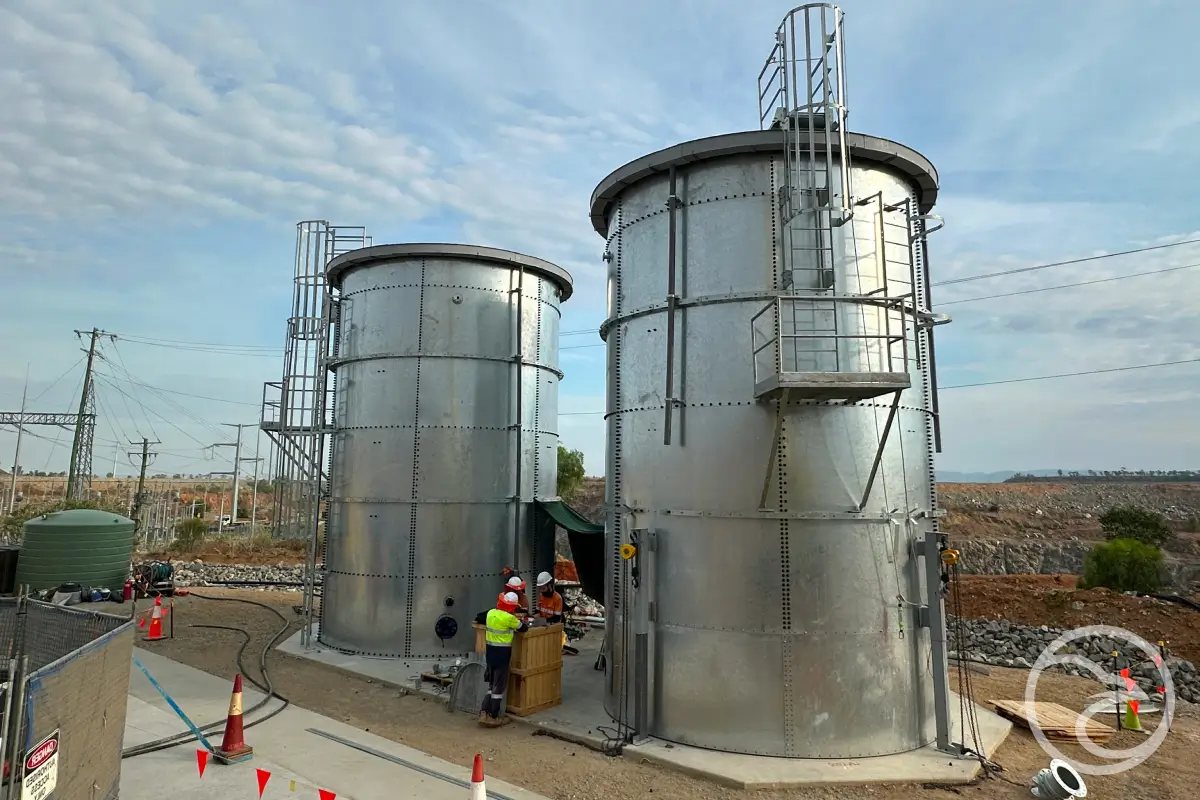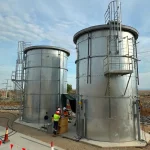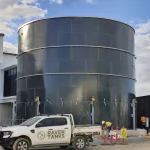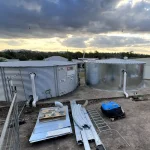Industrial fire water tanks play a critical role in any facility’s fire protection system. They ensure a reliable water supply for sprinklers, hydrants, and other firefighting systems in industrial and commercial properties. Over time, however, these tanks can suffer from corrosion, leakage, or sediment build-up, which reduces storage capacity and system efficiency.
Regular maintenance of fire water tanks helps preserve safety, extend lifespan, and maintain compliance with Australian fire standards such as AS2304 and AS1851. Neglecting inspections or repairs can result in severe safety risks, equipment failure, and even insurance non-compliance.
Types of Fire Water Tanks and Reservoirs
Fire water tanks come in several configurations, each suited for different environments and budgets. Common options include:
- Concrete fire reservoirs – durable and suitable for large-capacity installations.
- Steel panel fire tanks – modular, quick to install, and ideal for industrial settings.
- FRP or GRP fire water tanks – lightweight and corrosion-resistant options for coastal or chemical environments.
- Certified fire water tanks – fully compliant with AS2304:2019, ensuring safety and reliability for critical fire protection systems.
Choosing the right tank type depends on factors like water demand, space availability, and exposure to environmental or chemical conditions.
Common Issues Requiring Fire Tank Repairs
Even the best-built fire water tanks require periodic attention. Some of the most common issues include:
- Corrosion and leaks – metal surfaces exposed to moisture and chemicals deteriorate over time.
- Coating or liner damage – protective layers can crack or peel, leading to contamination and structural degradation.
- Sediment accumulation – buildup at the tank’s base reduces capacity and affects water flow.
- Deformation and roof wear – external forces or poor maintenance may compromise the tank’s integrity.
Prompt fire tank repairs prevent minor defects from escalating into costly structural failures. Routine fire reservoir repairs ensure the system remains operational in emergencies.
Inspection and Compliance Standards
In Australia, fire water storage systems must adhere to strict inspection and maintenance standards. The two primary references are:
- AS2304:2019 – outlines design and installation standards for fire water tanks.
- AS1851:2012 – specifies the maintenance, inspection, and testing frequency for fire protection systems.
A certified fire water tank must undergo regular visual and structural inspections, including checks for corrosion, leakage, valve function, and liner integrity. Keeping detailed inspection records is essential for compliance and insurance validation.
Repair and Refurbishment Solutions
When a fire water tank shows signs of deterioration, refurbishment may be more economical than full replacement. Common fire water tank refurbishment methods include:
- Liner replacement – using high-quality PVC or EPDM liners to restore watertightness.
- Corrosion-resistant coatings – applying protective layers that extend the lifespan of steel or concrete tanks.
- Leak sealing and crack repair – using modern sealants for permanent fixes.
- Roof and access maintenance – ensuring safe operation and weather resistance.
Professional fire reservoir repairs help restore full capacity while ensuring continued compliance with national standards.
Advanced Fire Tank Inspections Using Drones
The latest trend in maintenance is the use of drones for tank inspection. A drone fire tank inspection allows internal and external surveys without draining the tank or exposing personnel to confined spaces. Drones equipped with high-definition cameras and lighting can capture detailed visuals of welds, seams, and coating conditions.
Remote drone tank inspection also enables engineers to assess tanks in hard-to-reach areas, reducing downtime and improving safety. The data collected supports predictive maintenance, identifying potential failures before they escalate.
Ensuring Long-Term Fire Protection Readiness
A well-maintained fire water tank guarantees reliable water supply during emergencies. Regular inspections, timely repairs, and compliance with AS2304 and AS1851 standards are the foundation of effective fire protection readiness.
Whether you manage an industrial site, warehouse, or commercial facility, scheduling professional inspections and refurbishment can save costs and prevent accidents.
Reliable industrial fire water tanks are not just storage units — they are an essential safeguard for property, people, and operational continuity.
Conclusion
Maintaining a compliant and fully functional fire water tank is essential for any facility’s safety infrastructure. Through proper inspection, timely repair, and modern technologies such as drone surveys, operators can ensure maximum reliability and longevity.
For certified inspections, repairs, or full fire water tank refurbishment, partner with an experienced team that understands both the technical and safety standards of industrial fire protection systems.










